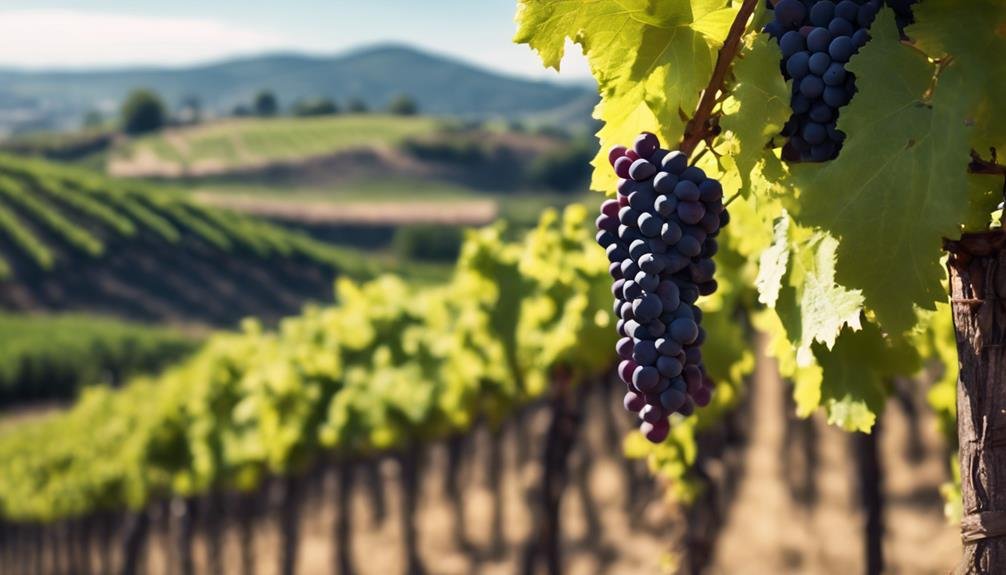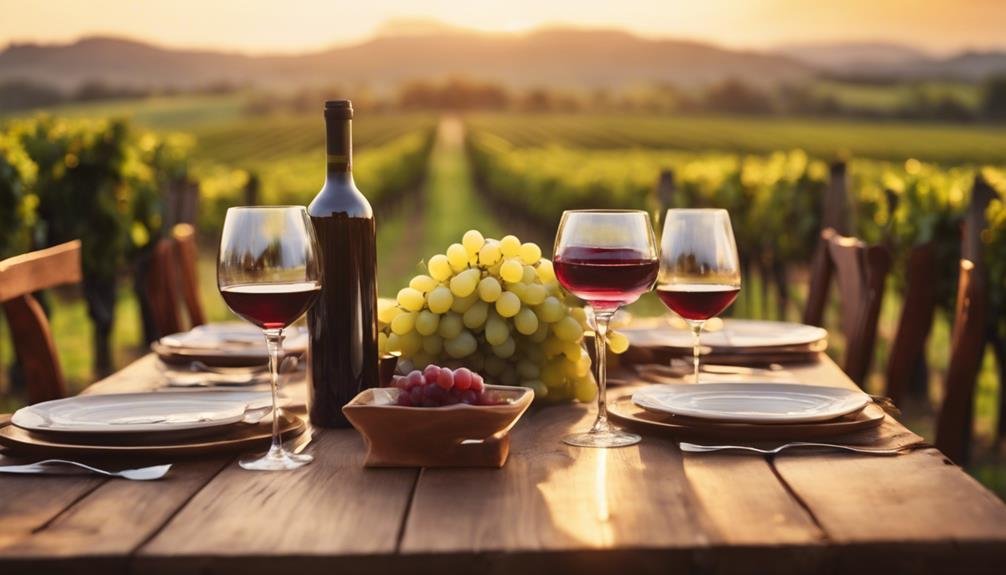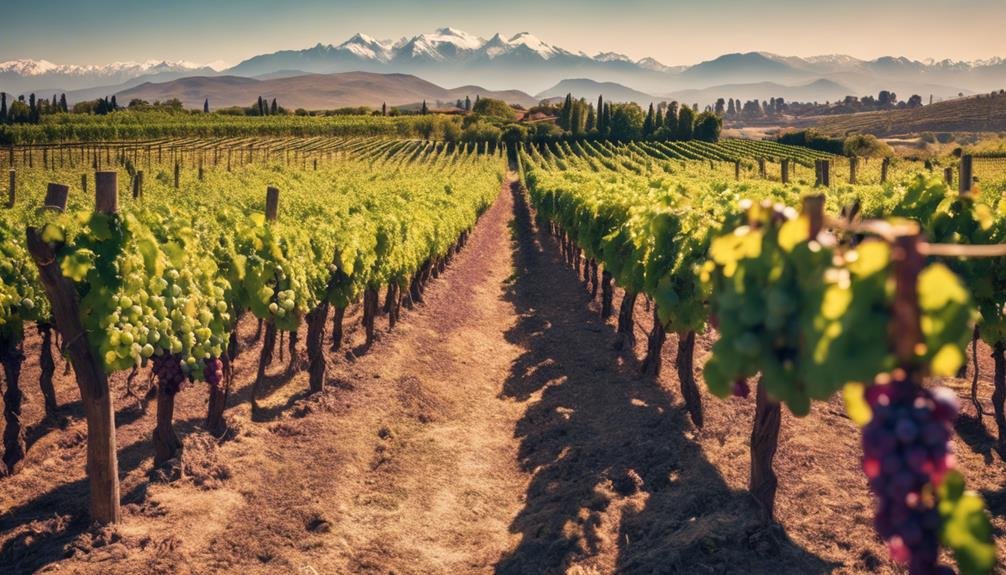Discover the fascinating world of Carménère wine, celebrated for its versatility in food pairings and aging potential of up to 15 years. This wine unfolds with flavors of sweet berries, subtle tannins, and hints of cocoa, providing a sophisticated drinking experience. Carménère stands out for its unique traits, making it distinct from other varietals. Produced primarily in Chile's Central Valley, regions like Maipo, Colchagua, and Rapel Valley offer diverse styles. Factors like terroir, climate, and winemaking techniques shape its taste profile. When buying, look for wines that complement dishes like grilled lamb and spicy cuisine, keeping an eye on vintage for ultimate enjoyment. Renowned wine expert Madeline Puckette shares invaluable insights on Carménère, enhancing your appreciation for this exceptional varietal.
Carménère Wine Characteristics
When exploring the world of Carménère wine, one is immediately drawn to its distinctive characteristics that set it apart from other varietals. Carménère is known for its versatile food pairings, complementing dishes such as grilled lamb, hearty stews, and even spicy Mexican cuisine.
This wine's aging potential is remarkable, with premium Carménère wines from regions like Peumo in Chile capable of aging gracefully for up to 15 years. The aging process allows the wine to develop complex flavors of sweet berries, light tannins, and a hint of cocoa powder, making it a delightful choice for those seeking a rich and sophisticated drinking experience.
Notable Carménère Producing Regions
Exploring the allure of Carménère wine inevitably leads to an examination of the notable regions globally recognized for their production of this distinctive varietal. These regions boast breathtaking vineyard landscapes that contribute to the unique terroir influence on Carménère grapes, resulting in exceptional wines.
Among these regions, the Central Valley of Chile stands out as the majority producer of Carménère, with important areas like Maipo Valley, Cachapoal Valley, Peumo, Colchagua Valley, and Apalta. Peumo is renowned for its highly-rated wines capable of aging up to 15 years, while Colchagua Valley offers a diverse range of Carménère styles.
Additionally, wines from the Rapel Valley can come from both Colchagua and Cachapoal Valleys, showcasing the versatility and complexity of Carménère production in Chile.
Factors Influencing Carménère Taste

Factors influencing the taste profile of Carménère wines encompass a complex interplay of terroir, winemaking techniques, and grape maturity levels. Terroir influence, including factors like soil composition, climate, and altitude, plays a significant role in shaping the flavor profiles of Carménère wines. Different regions where Carménère is cultivated contribute distinct characteristics to the wine, such as herbaceous notes in cooler climates versus riper fruit flavors in warmer regions.
Additionally, the aging process, whether in stainless steel tanks or oak barrels, can influence the development of flavors and the texture of the wine. Understanding these factors can help in selecting the right Carménère wine to complement specific food pairings and enhance the overall tasting experience.
Tips for Buying Carménère Wine
In order to make informed decisions when purchasing Carménère wine, it is important to take into account the wine's origin, vintage, and preferred flavor profiles. When buying Carménère, consider the following tips:
- Food pairings: Carménère pairs well with various dishes like grilled lamb, beef stew, or even spicy Mexican cuisine. Its peppery notes and rich fruit flavors complement these foods excellently.
- Aging potential: Higher quality Carménère wines from regions like Peumo in Chile can age gracefully for up to 15 years, developing more complex flavors and smoother textures over time.
- Vintage importance: Vintage plays a significant role, especially for affordable Carménère wines. Be mindful of the year indicated on the bottle to make sure you're getting the desired style and quality.
Learn From Wine Expert Madeline Puckette

Madeline Puckette, a renowned wine expert and co-founder of Wine Folly, provides invaluable insights and knowledge to enhance your understanding of Carménère wine. Her expertise sheds light on the nuances of this intriguing varietal, offering guidance on wine pairings and tasting notes. Below is a table summarizing some key points to enrich your Carménère experience:
| Aspect | Description | Recommendation |
|---|---|---|
| Wine Pairings | Works well with grilled meats and spicy dishes | Try with lamb chops or chili |
| Tasting Notes | Aromas of raspberry, green peppercorn, and cocoa | Look for wines with these notes |
Frequently Asked Questions
How Does the Terroir in Chile Impact the Taste of Carménère Wine?
The terroir in Chile profoundly influences Carménère wine's taste. The unique soil composition and microclimate in regions like Maipo, Colchagua, and Apalta enhance grape characteristics. Winemaking techniques further amplify flavors, resulting in rich, fruity wines with distinct minerality and complexity.
Are There Any Specific Food Pairings That Complement Carménère Wine Well?
Pair the rich, fruity notes of Carménère with savory dishes like grilled lamb chops, mushroom risotto, or spicy beef empanadas. The wine's bold flavors and moderate tannins complement these culinary delights, creating a harmonious dining experience.
What Are the Key Differences Between Carménère and Other Red Wine Varietals?
Key differences between Carménère and other red wine varietals lie in flavor profiles and production techniques. Carménère offers unique aromas of raspberry, green peppercorn, and a bittersweet note. Regional variations in Chile impact taste, with pairing suggestions including hearty dishes like grilled meats.
Is There a Recommended Serving Temperature for Carménère Wine?
For Carménère wine, the recommended serving temperature is typically between 60-68°F (16-20°C). Decanting benefits Carménère, allowing flavors to open up. Ideal glassware includes Bordeaux or Cabernet Sauvignon glasses. Store in a cool, dark place.
How Does the Aging Potential of Carménère Wines Compare to Other Red Wines?
In the world of red wines, Carménère showcases a cellar potential that rivals its counterparts. Its tannin structure and aging ability contribute to a flavor development journey, offering enthusiasts a unique and compelling experience in the domain of aging wines.
Conclusion
Embark on a sensory journey through the alluring world of Carménère wine, where each bottle holds a story of tradition, craftsmanship, and terroir influence.
From the lush vineyards of Chile to the prestigious terroirs of Maipo Valley and Colchagua Valley, the complexities of Carménère offer a spectrum of tasting notes that will captivate your palate.
Discover the rich history and distinct flavors of this enigmatic varietal, and indulge in a truly unique oenological experience.
Cheers to the wonders of Carménère wine!
